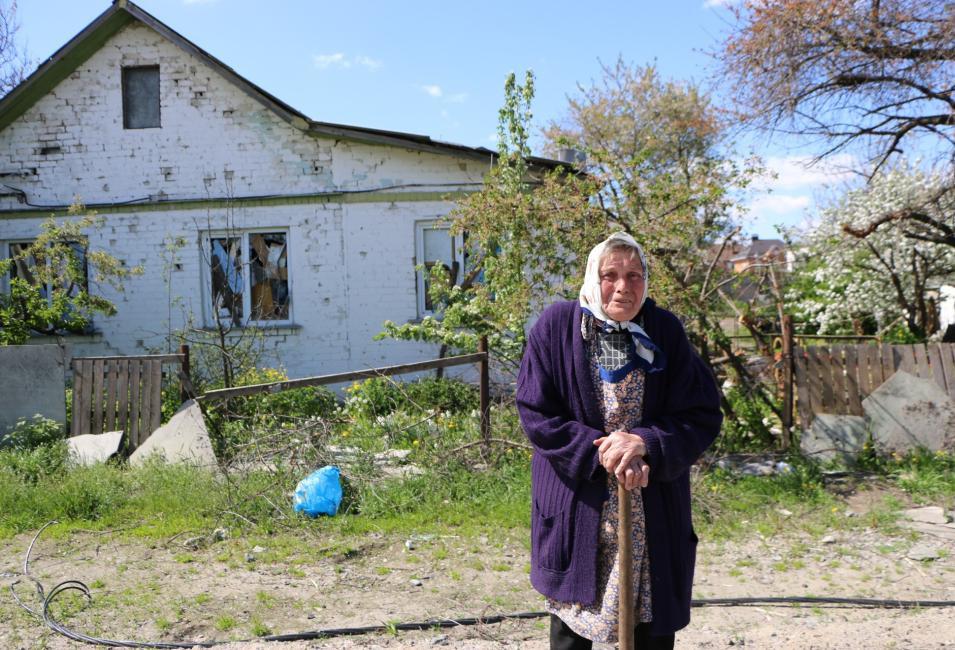Released Date
2022-07-02 | 16:26:00Returns Increase in Ukraine, but 6.2 Million People Remain Internally Displaced

More than 5.5 million displaced persons have returned to their homes in Ukraine while the overall number of internally displaced persons (IDPs) remains high at over 6.2 million, according to the International Organization for Migration’s (IOM) latest report. About half of those who had left their homes due to the war since 24 February have now returned, especially to the North of the country and to the capital Kyiv. The number of returns has grown significantly – by 24 per cent – over the last month. Most returnees have returned to their homes from other locations within Ukraine and about three-quarters of those people plan to stay. Only 10 per cent of people are returning to Ukraine from abroad. Considering the situation in Ukraine remains highly volatile, and despite a majority of all returnees (internally displaced and coming from abroad) indicating their intention to stay in their homes (74 per cent), returns may not be long-term.
Geneva – More than 5.5 million displaced persons have returned to their homes in Ukraine while the overall number of internally displaced persons (IDPs) remains high at over 6.2 million, according to the International Organization for Migration’s (IOM) latest report. About half of those who had left their homes due to the war since 24 February have now returned, especially to the North of the country and to the capital Kyiv.
The number of returns has grown significantly – by 24 per cent – over the last month. Most returnees have returned to their homes from other locations within Ukraine and about three-quarters of those people plan to stay. Only 10 per cent of people are returning to Ukraine from abroad. Considering the situation in Ukraine remains highly volatile, and despite a majority of all returnees (internally displaced and coming from abroad) indicating their intention to stay in their homes (74 per cent), returns may not be long-term.
The sixth round of the general population survey conducted between 17 June and 23 June reveals that the most pressing needs of both displaced and non-displaced persons include access to health services and education, as well as rehabilitation of damaged homes. Alarmingly, the IOM survey revealed that almost one in four people (23 per cent) in Ukraine had to stop using their medication during the war, because it was either unavailable or too expensive.
The survey also sheds light on a dire situation: access to education has been particularly precarious among children in displaced households. As many as 38 per cent of families with children aged 5-17 among displaced people and 25 per cent among non-displaced stated that their children did not have full access to education. The situation is most critical in the East of the country, where 16 per cent of displaced households with children of school age indicated they had no access to education at all.
Almost 10 per cent of all respondents, and 15 per cent of returnees, indicated that their home was damaged by war. This results in growing needs for shelter repair materials and assistance, especially among returnees.
In response to growing health care and shelter needs, IOM is responding swiftly. IOM’s mobile medical teams have provided more than 9,000 health care and psychological consultations in western Ukraine. More than 40 facilities benefited from IOM’s shelter rehabilitation works in Lviv, Uzhhorod, Vinnytsia, Chernivtsi, Ivano-Frankivsk, Dnipro, and Poltava regions. IOM is also planning longer-term housing solutions in the regions of displacement and in the war-damaged cities of return.
Since the beginning of the war, hundreds of thousands of people in 24 regions of Ukraine have received direct assistance from IOM, including food, non-food and hygiene items, cash, mental health and psychosocial support, and have received timely information to help prevent human trafficking and sexual exploitation and abuse.
Read the latest Internal Displacement Report on Ukraine here.
- https://www.iom.int/news/returns-increase-ukraine-62-million-people-remain-internally-displaced
User Comments
- There is no comment!